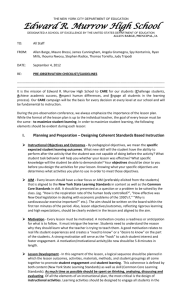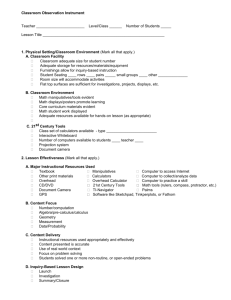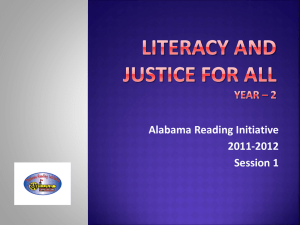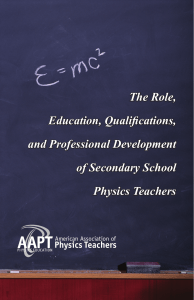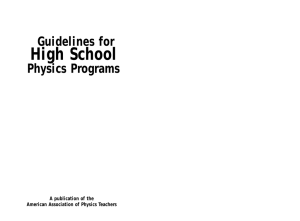Patty Blanton (teacher) Questioning Tips
advertisement
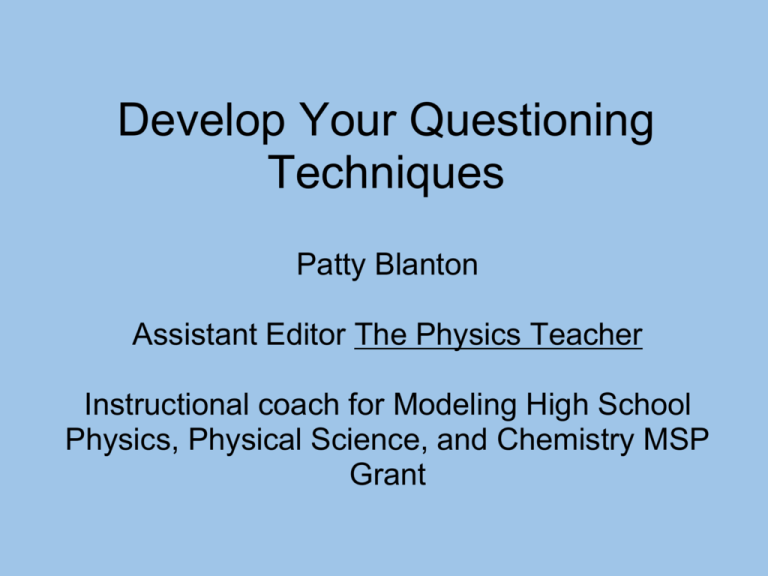
Develop Your Questioning Techniques Patty Blanton Assistant Editor The Physics Teacher Instructional coach for Modeling High School Physics, Physical Science, and Chemistry MSP Grant Classroom Climate Clearly establish the expectations of the learning partners Expectations of Students: Expectations of Teacher: 1. Contribute to building knowledge 2. Answer questions clearly, carefully, and thoughtfully 3. Speak so that everyone in class can hear 4. Respect the ideas of others 5. Challenge ideas respectfully 6. Engage in dialogue to clarify ideas presented 1. Plan significant questions to develop understanding of the established instructional goal 2. Provide sufficient wait time 3. Keep the discussion focused 4. Encourage students to elaborate and clarify responses 5. Draw in as many students as possible 6. Periodically summarize Assessing for Prior Knowledge Checking for prior knowledge gives insight to guide your instruction. Periodic assessments during a unit help adjust your planning to meet the needs of students. Example: Using www.wordle.net to determine what ideas students think are important about the topic being discussed Other possibilities: Pre-tests concept mapping (Inspiration) " clickers" various web applications such as online surveys Bloom's Revised Taxonomy 1.Knowledge (remember) 2.Comprehension (understand) 3.Application (apply) 4.Analysis (analyze) 5.Synthesis (create) 6.Evaluation (evaluate) Jamie MacKenzie's Questioning Toolkit http://www.fno.org/nov97/toolkit.html Types of questions and various tools to develop these questions and answers A Thinker's Guide the Socratic Questioning Sample Let's Practice Lesson on motion: What is motion and what are the ways we can describe it? Teacher will: Plan activities to engage students Think about the types of questions to ask and strategies to guide the development of ideas Plan the assessment strategies to check progress Students will: Observe, ask questions, contribute ideas, collect and analyze data, draw conclusions based on the data, apply the concept to several situations Building a model for motion: Watch the moving objects Describe the motion Identify what is changing and what is measurable Is there a pattern to what is changing and how it is changing? Collect and analyze data to identify pattern Summarize results Develop operational definitions and associate names to the concepts Apply to a novel situation Types of representations Graphs and mathematical representations Help identify and quantify relationships between variables Mathematical equations come from curve-fitting to graphed data Graphic and descriptive representations Motion maps Concept mapping Diagrams Verbal representations Links to helpful websites Integrating Technology into the Classroom using Instructional Strategies based on the research from: Classroom Instruction that Works by Marzano, Pickering, Pollock http://www.tltguide.ccsd.k12.co.us/instructional_tools/Strategies /Strategies.html Professional Organizations: AAPT: http://www.aapt.org/ NSTA: http://www.NSTA.org/ Modeling Science Instruction: http://modeling.asu.edu/modeling-HS.html
